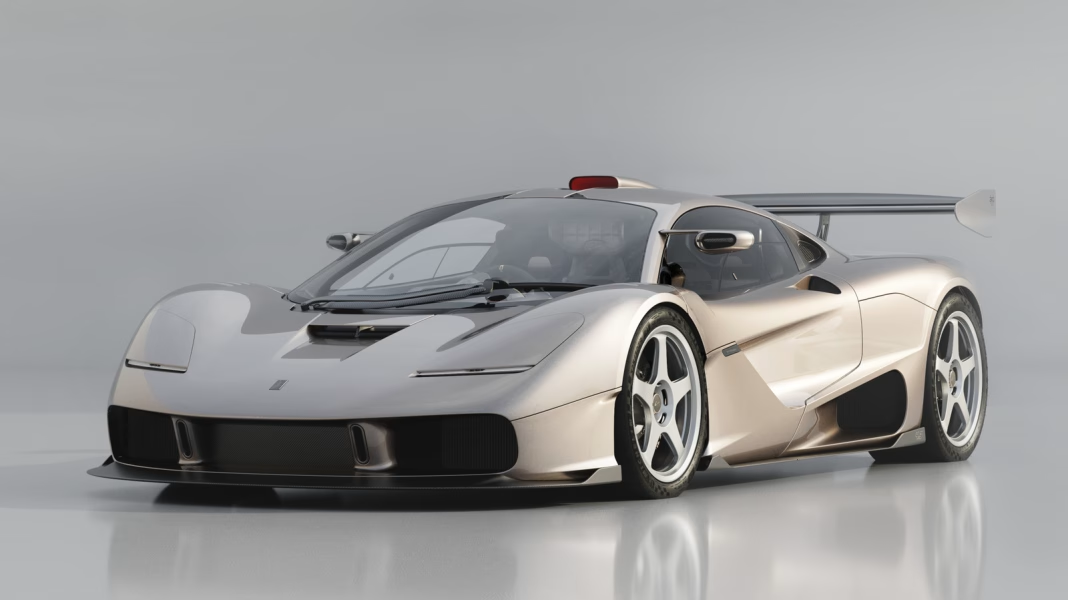Why Would Gordon Murray Revisit the Past for a Modern Supercar?
Gordon Murray’s name is practically synonymous with automotive innovation. He’s the mastermind behind the legendary McLaren F1, a car that still turns heads and sets benchmarks decades after its debut. So, when Murray is asked to give his latest supercar a retro twist, it’s natural to wonder: is this a genuine homage, or just nostalgia for nostalgia’s sake?
Let’s be honest—car enthusiasts love a good throwback. The lines, the analog feel, the purity of design from the 1990s. But the world has changed. Today’s supercars are packed with tech, safety features, and performance wizardry that would have seemed like science fiction back in the F1’s heyday. So, can you really recapture that old-school magic without losing what makes modern cars so compelling?
What Makes the McLaren F1 Such a Tough Act to Follow?
The McLaren F1 isn’t just a car—it’s a legend. Lightweight, naturally aspirated, and famously featuring a central driving position, it set the bar for what a supercar could be. Even now, its 627-horsepower V12 and three-seat layout are the stuff of dreams. The F1 wasn’t about brute force or digital trickery; it was about balance, feel, and the thrill of driving.
That’s a tall order for any successor. When Murray is asked to channel the spirit of the F1, he’s not just redesigning a car—he’s trying to bottle lightning twice. The challenge? Blending the raw, analog soul of the original with the expectations and realities of 21st-century motoring.
Does the S1 LM Capture the Essence of Its Predecessor?
Let’s get specific. The S1 LM, Murray’s latest creation, wears its F1 inspiration on its sleeve. The silhouette, the proportions, even the details—everything screams homage. But does it work, or does it feel like a greatest hits album that never quite matches the original?
Some critics argue that the S1 LM leans a bit too hard on nostalgia. The retro cues are there, but the car’s personality can feel overshadowed by its famous ancestor. It’s a bit like a cover band nailing every note but missing the raw energy of the original performance. That said, there’s no denying the craftsmanship. The S1 LM is meticulously engineered, with lightweight materials and a focus on driver engagement that’s rare in today’s market.
How Do Modern Supercars Balance Heritage and Innovation?
This is where things get interesting. The best modern supercars don’t just copy the past—they reinterpret it. Porsche’s 911, for example, has evolved over decades, keeping its iconic shape but constantly pushing the envelope with new tech and performance. Ferrari’s latest models blend classic styling cues with hybrid powertrains and cutting-edge aerodynamics.
Murray’s approach with the S1 LM is a bit different. He’s less interested in reinventing the wheel and more focused on perfecting a formula he believes in. There’s a purity to that vision, but it can also feel a bit insular—like a private club for those who already worship at the altar of the F1.
What Do Real Drivers Think About Retro-Inspired Supercars?
Here’s where the rubber meets the road. For some drivers, the S1 LM’s retro vibe is a dream come true—a chance to experience the spirit of the F1 with modern reliability and performance. For others, it’s a missed opportunity to push the boundaries and create something truly new.
A recent survey by Hagerty found that while collectors love nostalgia, younger buyers are increasingly drawn to innovation and sustainability. They want cars that look forward, not back. That doesn’t mean there’s no place for retro-inspired machines, but it does suggest that the market is shifting.
Is There Room for Both Old-School Charm and Modern Performance?
Absolutely. The trick is finding the right balance. The S1 LM may not be for everyone, but it’s a testament to the enduring appeal of the analog driving experience. In a world where so many cars feel interchangeable, there’s something refreshing about a machine that wears its influences proudly—even if it means courting a bit of controversy.
The big takeaway? Chasing the magic of the past isn’t about perfection—it’s about smarter adjustments. Start with one change this week, and you’ll likely spot the difference by month’s end. Whether you’re behind the wheel or just admiring from afar, it’s the willingness to evolve—without forgetting where you came from—that keeps the automotive world moving forward.


